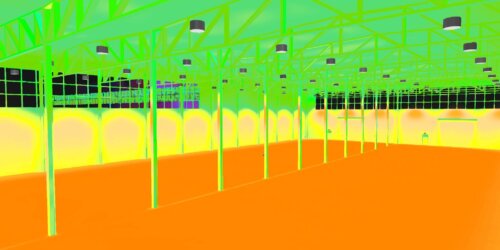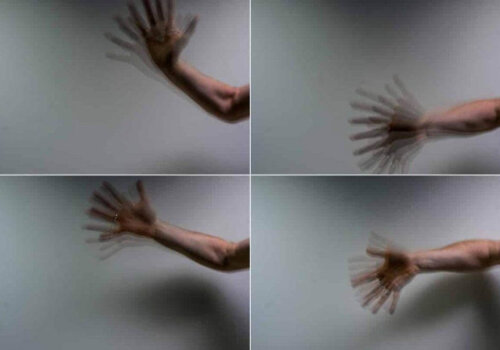Basic parameters in lighting
Luminous flux is a quantity that characterizes the luminous effect of the radiant flux of a lamp. The unit of luminous flux is the lumen (lm).
Luminous intensity (I) is the luminous intensity of a light source in the direction determined by the luminous flux of the light source, which describes the ability of the light source to produce light in a given direction.
Brightness (L) characterizes the apparent density of the light intensity on the illuminating or reflecting surface, i.e. the brightness of the illuminated area that reaches the viewer’s eye. The unit of luminosity is candelas per square meter (cd/m2). The brightness of the surface depends on the angle of view and depends on the reflectance of the surface.
Luminance (E) indicates the luminous flux per unit area in lux and is the basic measure for illuminance evaluation. Irrespective of the age and condition of the lighting installation, the average illuminance for any visual function shall not be less than that specified in the standard.
The standards give maintenance values for the luminance (Ēm) below which the average luminance of the surface must not fall. The required illuminance is calculated during the design in the appropriate lighting calculation software.

Luminance uniformity (U0) is the ratio of the minimum and average luminance of a surface and its minimum permissible values are given in EVS-EN 12464-1:2011:Indoor workplaces.
Large differences in light intensity in the room and around the work area cause visual stress and discomfort and can cause tension headaches and rapid eye fatigue.


Glare is a sensation caused by excessively bright areas. To avoid mistakes, fatigue and accidents, it is important that glare is limited. The glare is assessed by the factor UGR, the required values of which, according to the type of building, room and visual function to be performed there, are given in the above-mentioned standards.
Glare calculations must be included in the lighting calculations. The easiest way to perceive extreme glare is to look at a sunny day directly in the sun without using protective equipment.
The reflectance indicates the ratio of the luminous flux coming from the surface to the luminous flux. The maximum value of the reflection factor is 1, according to which 100% of the light falling on the surface is reflected back.
In most cases, it is advisable that the reflectance of the surfaces of the workroom (especially the ceiling and the tops of the walls) is high, as this will save light energy. It is important that the modeling software uses the recommended reflectance factors for the main diffuse reflecting surfaces of the rooms. If no data are available, the standard factor from the table is used. The reflectance factor is also strongly influenced by the degree of soiling of the surfaces of the room.

| Surface | Reflection factor |
|---|---|
| Walls | 0,5 – 0,8 |
| Floor | 0,2 – 0,4 |
| Ceiling | 0,7 – 0,9 |

Color rendering index shows how many % true color we see when compared to sunlight in the test light we see. The general color rendering index Ra, with a maximum value of 100, is used to objectively describe the color rendering properties of the light source. In rooms where there is a continuous stay (ie more than 3 hours in a row), a Ra value of at least 80 is required.
In Europe, the Ra system is used, where 8 different colors are compared, outside Europe, the CRI (Color Rendering Index) is used, which gives an index of 15 colors compared to the light under test, the last of which is the color of human skin.
Color temperature (Tc) is a characteristic measured in Kelvin of light that expresses the thermal impression of color vision. Physically, the color temperature is the absolute temperature of the black radiator at which the black body radiation coincides with the light radiation of the light source in terms of color coordinates.
Only those colors that are quite similar to the possible colors of the black radiator can be characterized by the color temperature: red, orange, yellowish white, white, bluish white, blue. At color temperatures up to 3300 K, the light usually seems warm, above 5300 K cold. The stronger the lighting, the higher the color temperature that seems comfortable to the eye.

Vibration is defined as the unevenness of visual perception due to fluctuating brightness of light or variable spectral distribution. The variability may be periodic or non-periodic and may be caused by the light source, its ballast or other influencing factors.


A stroboscopic phenomenon is a change in the sensation of movement of a static observer in a non-static environment due to variability in the luminance or spectral distribution of the light stimulus over time. The variability may be periodic or non-periodic and may be caused by the light source, its ballast and its degree of dimming or other factor.
The stroboscopic phenomenon in the workplace causes: irritability, decreased productivity, eye fatigue, tension headaches, etc. The stroboscopic phenomenon is particularly dangerous in workplaces where fast-moving or rotating machines are used to perform the task. If the stroboscopic phenomenon and the machine rotation frequencies coincide, the machine may appear to be stationary, which can lead to life-threatening accidents.